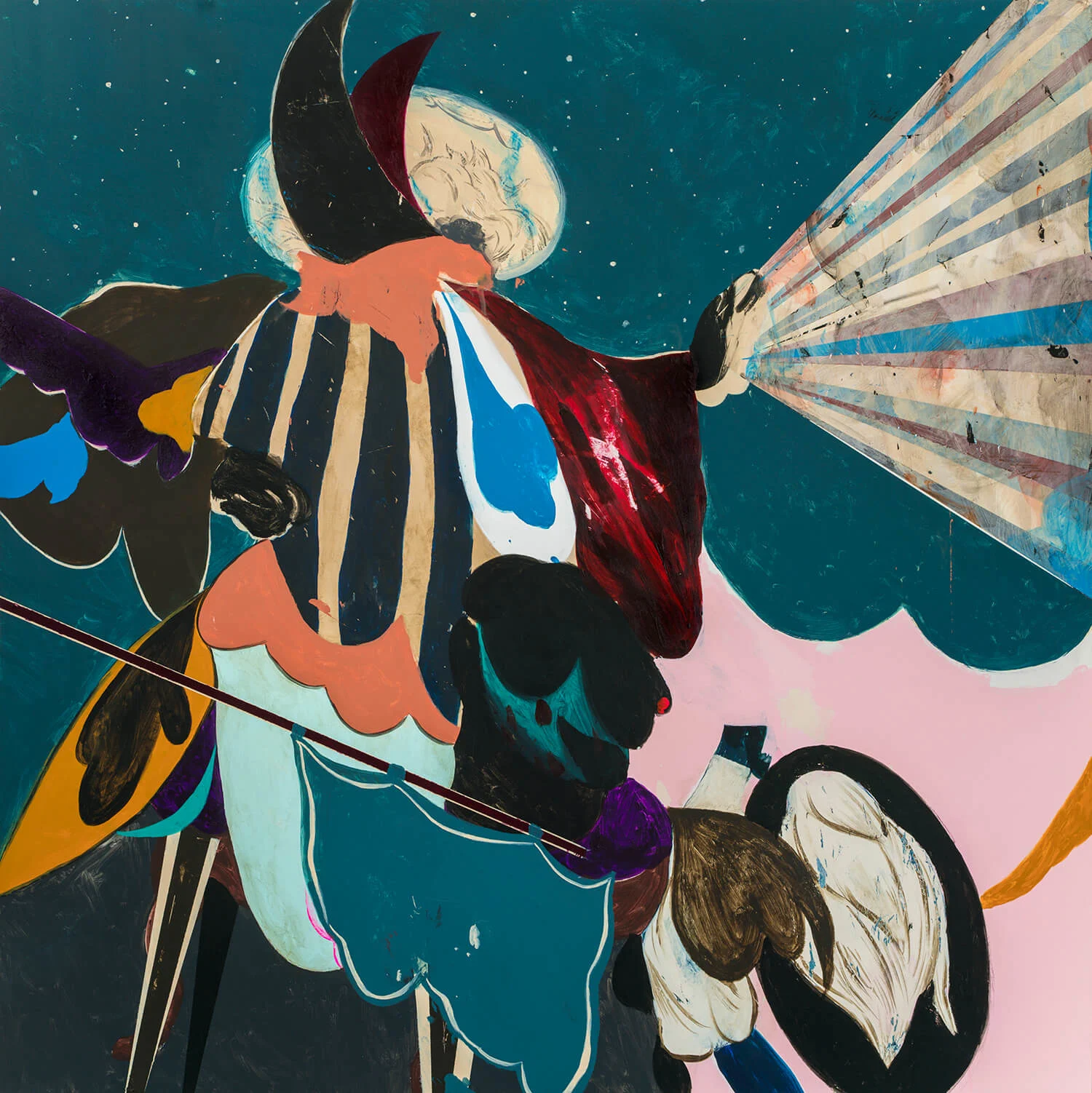

Many years ago a friend took Kenichi Hoshine on a backstage tour of The Metropolitan Opera in New York. Behind the heavy curtain he found a rich and fascinating world which would have a profound effect on his paintings.
“The backstage is probably twice the size of the actual stage the audience sees,” he says. “There you have hundreds of people running around with machinery, props and sets to make the performance possible. This hidden production intrigued me very much; it was a lot more interesting than what was occurring on stage. I strive to incorporate some of this illusion and deceit into my paintings.”

Kenichi’s work sits between two artistic styles, figurative and abstract. Like the line at the edge of the spotlight, one part is clear as day while the other lays in the shadows. At first it seems like a jostle between abstract shapes and swathes of color but as your eyes settle you notice distinct objects – a coffee pot, a vintage movie projector, a dagger – and lesser defined figures who act out dramas as if on stage.
“I guess it's the best of both worlds when you try to say everything in a singular painting,” he says. “You don't want to spoon-feed your audience but you don't want to alienate them either. You don't want to be too saccharine nor too subtle. I don't think I consciously try to hit this balance when I paint but of course, it's always in the back of my mind and my subconscious may guide me towards this murky middle ground.”

Theater sets, botched military campaigns, neglected wallpapers and nocturnal anxieties are among the ideas which have crept into Kenichi’s recent paintings. In The Search Party there’s a visible fly system rigged to lower the moon, or hoist cardboard trees offstage.
I strive to incorporate some of this illusion and deceit into my paintings.


Of course whatever you think you're seeing is mostly to do with you, as Kenichi doesn’t give anything away too easily. You might, if you're lucky get a clue from the title.
He selects titles from a text file on his computer where he’ll jot down interesting words or phrases, like geographical locations and book titles. He waits until the very end of painting a piece to name it. “The title is the cherry on top,” he says.

Kenichi also gives form to his subjects through their recognizable clothing, like a pink tea dress or a black top hat and coattails. They’re extravagant, stage-ready costumes, but despite the theater references, Kenichi insists the figures aren’t characters.
“I feel like that word implies that they're imbued with a personality or a specific attachment,” he says. “They're more like nebulous figures – if they're figures at all – that occupy the space. There's no personal connection or hierarchy associated with them.”
Sometimes you only see a torso or an arm; mere suggestions of people. Kenichi has always found images that are obscured or fragmented to be more interesting than complete pictures.

A cursory glance at the countless, random images I have saved on my laptop may trigger something.
His thematic interests seem to be fragmented too and his thought process rarely follows a set pattern. “A cursory glance at the countless, random images I have saved on my laptop may trigger something,” he says. “Or a piece of distressed scrap metal on a street corner may plant a seed for a possible composition.”
Right now, he’s obsessed with the brightly colored drawings in medieval alchemy manuscripts, featuring wild beasts, poisonous concoctions and other mythological discoveries. “Their bizarre visuals have been a great springboard.”

Like his foray backstage and his discovery of illustrated alchemy, the themes in Kenichi’s paintings are distillations of his interests at any given time. There’s one hobby though that, for the foreseeable future, won’t make its way into his work.
“I love to fly fish because it has absolutely nothing to do with my practice of painting,” he says. “I like to keep the two disciplines as far away from each other as possible.”


